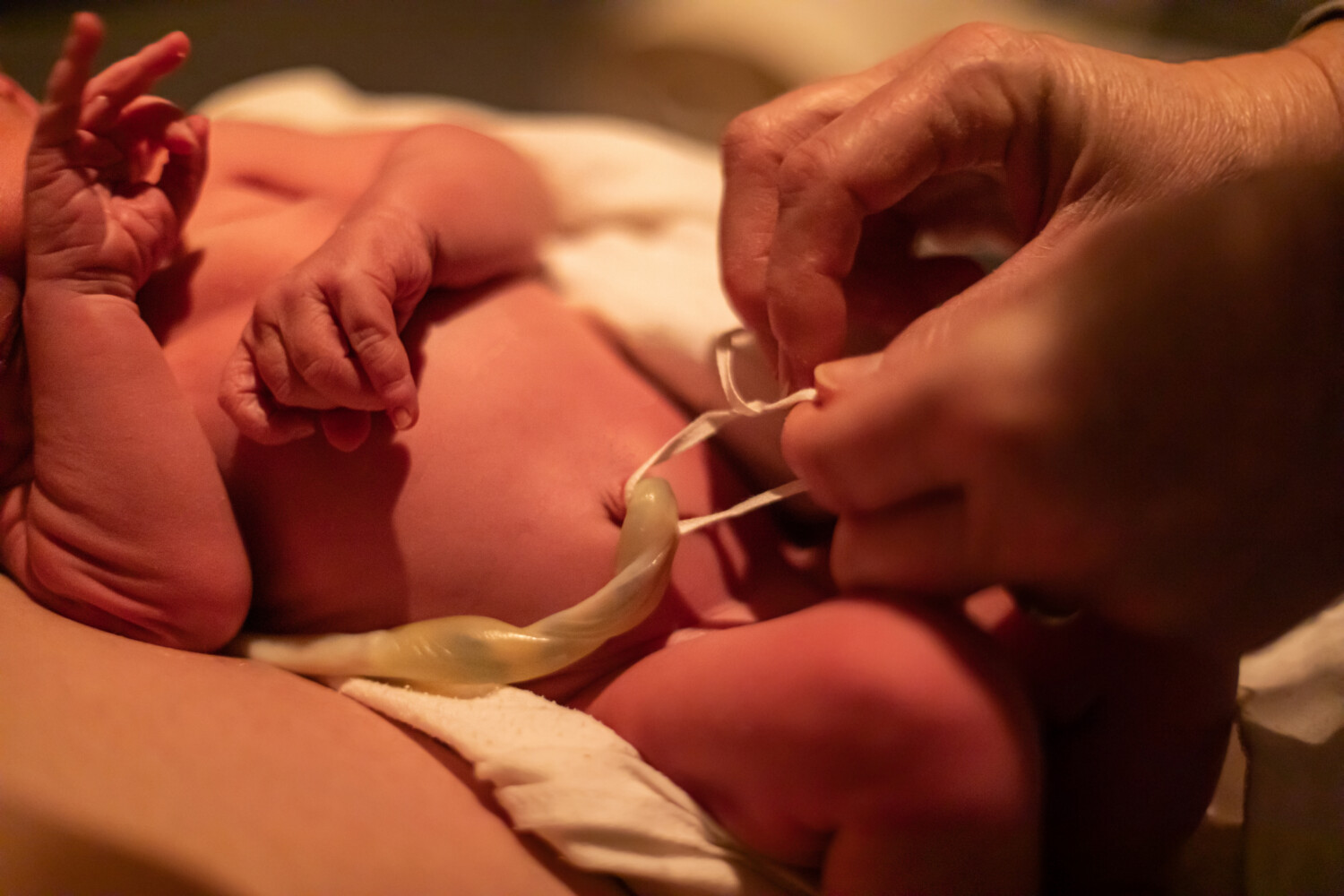It’s no secret that TikTok has become an incredibly popular resource for people who want to gain insight into alternative health practices. While some trends on the platform veer into questionable territory, some do provide value and warrant further investigation.
One of the latest practices to trend on the platform is what’s called a lotus birth, a practice in which the umbilical cord is not immediately cut upon delivery. Also known as umbilical cord non-severance, lotus birthing has garnered the attention of many who praise its benefits, as well as some medical professionals who are questioning its validity. As of right nowthe search term “lotus birth” has received around 4 billion views on the social media platform.
History Of The Lotus Birth
To fully understand lotus birthing, it’s important to note that it’s not actually a new trend. It first became became popular decades ago after scientist Clair Lotus Day witnessed a chimpanzee giving birth in 1974 without severing the placenta from her baby.
The practice has gained popularity, with the number of lotus births increasing since the early 2000s. In early 2008, the Royal College of Obstetricians and Gynaecologists in the U.K. were seeing an uptick, which led to them issuing a statement to inform the public that “no research exists on lotus births and there is currently no medical evidence that it is of benefit to the baby,” according to LiveScience.
A 2018 study in the journal Clinical Pediatrics also states, “no evidence-based research devoted to clinical outcomes has been published on the subject,” which indicates that despite more public attention to lotus births, at least science-wise, experts do not recommend it.

What Does a Lotus Birth Entail?
The actual practice of lotus birthing is relatively straightforward. Once a mother gives birth, instead of having the umbilical cord clamped and cut by a medical practitioner, she allows the baby to remain attached to the placenta by way of the umbilical cord.
The umbilical cord will typically detach naturally from the baby within a period of five to 15 days. During this time period, the placenta will need to be cared for. This can be done in different ways, such as washing it and drying it before storing it in a special bag. You can also leave it open to air, or treat it with salt, herbs and essential oils to help to keep bacteria at bay — or combine some of these steps.
In this TikTok video from @tanbillionaire, you can see the placenta being treated in this way so that it can be preserved.
@tanbillionaireLotus Birth ⬠original sound – Tan Billionaire
The Role of Delayed Cord Clamping
Since medieval times, the umbilical cord has been cut almost immediately after the baby was delivered. In some cases, it was cut before the mother was given a chance to deliver the placenta, which happens shortly after the baby is birthed.
However, recent research is shedding light on the benefits of delaying the cutting of the cord, also known as delayed cord clamping. This is defined as waiting at least 30 seconds after the baby is born to cut the cord, or until the pulsation of the umbilical cord has fully stopped. In fact, The American College of Obstetricians and Gynecologists officially recommends waiting 30 to 60 seconds to clamp and cut the cord.

Benefits of waiting this long to clamp the umbilical cord include increased red blood cell counts, improved iron levels and better circulation, among others.
Delayed cord clamping differs greatly from the amount of time the baby stays attached to its placenta in a lotus birth. It does represent an important shift in awareness around the relationship between the baby, the umbilical cord and the placenta.
Are There Benefits To A Lotus Birth?
Since lotus births prohibit any clamping or cutting of the cord altogether, lotus-birth babies will likely receive the same benefits as ones who’ve had delayed cord clamping. Some studies have also shown that lotus birthing can increase bonding and attachment between mothers and infants.
Practitioners of lotus births say some of the benefits include a less shocking introduction of the baby to the world and increased nourishment from the placenta via the umbilical cord. There is also an angle where parents feel it’s important to honor the sacred ritual of birth and the connection the baby has with the placenta.

Experts also say that the autonomy the experience provides can help empower patients to feel more in control of their bodies.
“The concept of somebody not entering that space that is super sacred to you and having somebody not do any of the things that we are used to doing appeals to people,” certified nurse midwife Megan Fendt told Parents.
It’s important to note that most of these benefits are psychological or spiritual and not medical. In addition, Trixie Kioko-Kamps, a certified nurse midwife from Oula in New York City, explained that these conclusions are not backed by science; they are anecdotal.
“Because I cannot measure or point to quantitative hard data on the benefits of a lotus birth, the benefits that I see are directly linked to the benefits my patients have defined/see for themselves,” she told Parents.

Risks of a Lotus Birth
Some risks come with the practice. Medical organizations and researchers are fairly unified in not recommending the practice. Experts at the University of Michigan’s C.S. Mott Children’s Hospital say that the placenta essentially becomes dead tissue after delivery, and the blood that remains in the placenta could become infected and transfer over to your baby.
While this is a relatively new neonatal practice, lotus birth has already been associated with staphylococcus lugdensis sepsis (skin and tissue infections) and endocarditis (heart inflammation), neonatal omphalitis (umbilical cord infections), and other conditions in documented cases. Medical experts also say jaundice, hepatitis and postpartum hemorrhage are dangers for babies.
Here is Dr. Shannon Clark discussing the dangers of the practice on TikTok:
@tiktokbabydoc Replying to @kaymay00 the amount of bad medical info regarding pregnancy and birth on social media is appalling! #lotusbirth #pregnancy #pregnancytiktok #birth #childbirth ⬠Acoustic Guitar Stroll – Dow Brain
If you decide to do a lotus birth, be on the lookout for signs of infection. Symptoms that may signal infection include redness and swelling where the umbilical cord is attached, a high temperature and loss of appetite in your child, and sleep issues. Note that infections in newborns can be difficult to diagnose and can spread rapidly, becoming fatal very quickly.
Taking Care of Your Baby
If you decide on a lotus birth, you’ll have to take special care of the placenta, as previously mentioned, as well as your baby. Note that a lotus birth will limit your mobility as well as your child’s.
Make sure the placenta stays close to the baby to prevent the cord from tugging. Make sure your baby wears loose clothes that are open around the umbilical. Generally, be careful when you lift and care for your baby.
Whatever you do, experts say to not cut the cord yourself if you end up deciding not to let it fall off. Be sure to visit a medical practitioner if you decide to cut it. And do not delay if you or your child are experiencing any complications.
This story originally appeared on Simplemost. Check out Simplemost for additional stories.


